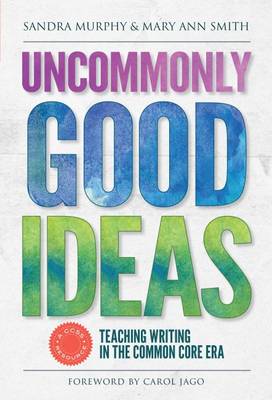Language and Literacy
2 total works
This innovative resource provides teachers with a road map for designing a comprehensive writing curriculum that meets Common Core State Standards. The authors zero in on several big ideas that lead to and support effective practices in writing instruction, such as integrating reading, writing, speaking, and listening; teaching writing as a process; extending the range of students' writing; spiraling and scaffolding a writing curriculum; and collaborating. These ideas are the cornerstone of best researched-based practices as well as the CCSS for writing. The first chapter offers a complete lesson designed around teaching narrative writing and illustrates tried-and-true practices for teaching writing as a process. The remaining chapters explore a broad range of teaching approaches that help students tackle different kinds of narrative, informational, and argumentative writing as well as complexities like audience and purpose. Each chapter focuses on at least one of the uncommonly good ideas and illustrates how to create curricula around it. Uncommonly Good Ideas includes model lessons and assignments, mentor texts, teaching strategies, student writing, and practical guidance for moving the ideas from the page into the classroom.
Assessing Writing, Teaching Writers
by Mary Ann Smith and Sherry Seale Swain
Published 23 December 2016
Many writing teachers are searching for a better way to turn student writing into teaching and learning opportunities without being crushed under the weight of student papers. This book introduces a rubric designed by the National Writing Project-the Analytic Writing Continuum (AWC)-that is making its way into classrooms across the country at all grade levels. The authors use sample student writing and multiple classroom scenarios to illustrate how teachers have adapted this flexible tool to meet the needs of their students, including using the AWC to teach revision, give feedback, direct peer-to-peer response groups, and serve as a formative assessment guide. This resource also discusses how to set up a local scoring session and how to use the AWC in professional development.

